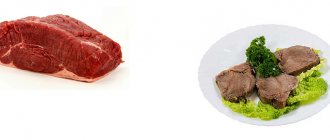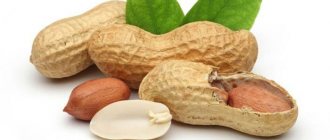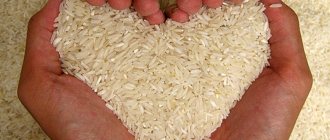It will be difficult to find a person who does not like chocolate. This exquisite dessert, which dates back several thousand years, has not only become a favorite delicacy for millions, but has even taken a strong position in culture. Chocolate and confectionery products made from it have become one of the main gifts that people give each other during the holidays. Real chocolate rivers flow in stores during the New Year and Christmas holidays, as well as during the celebration of Valentine's Day. And especially talented craftsmen manage to create incredible sculptures from this sweetness and even paint landscapes and portraits with it.
At the same time, people are interested in the calorie content of chocolate. After all, while enjoying the fabulous taste of its many varieties, it is difficult to resist the temptation to put another sweet piece in your mouth. As a result, this can result in excess weight, which will have to be lost with considerable effort. However, nutritionists and scientists testify that chocolate has many beneficial qualities that will benefit human health. The main thing is to choose the right amount of consumption of this dessert so that the sweetness does not cause extra centimeters to appear on the waist.
Calorie content of chocolate trinity
Today, experts distinguish three main types of chocolate on the confectionery market: black, milk and white. Of the presented line, the most useful type is considered to be the very first one - black. It is divided into types according to saturation.
Varieties of dark chocolate
| Name | Cocoa content |
| extra black | 90-99 % |
| classic bitter | 70% and above |
| dark bitter | 60–65 % |
| dessert | 55% or less |
Let's consider how many calories are in dark chocolate, based on the cocoa content in it. The calorie content of the most bitter dark chocolate is about 540 calories per 100 grams of the finished product. The classic version can contain 530–545 calories. In addition to cocoa, dark bitter contains a small amount of milk, however, its energy value also does not exceed 540–545 cal. Finally, dessert black, with a more delicate and sweet taste without the characteristic bitterness, has a calorie content of only 538 calories. The black type is the one with the richest composition. It contains vitamin E, as well as vitamins B1 and B2. The following microelements can be distinguished:
- magnesium;
- sodium;
- iron;
- phosphorus;
- potassium;
- calcium.
The milk chocolate recipe has undergone dramatic changes over time. If initially its creator, the famous Henri Nestlé, added condensed milk to the chocolate mass, now instead of condensed milk powdered milk or sometimes dry cream is used. The fat content of milk powder, as a rule, does not exceed 2.5%, but still the calorie content of milk chocolate is much higher than that of dark chocolate. This is due to the fact that it contains a lower percentage of cocoa and cocoa butter, but the amount of powdered sugar is increased. As a result, the average energy value of milk chocolate without any additives reaches 556 calories.
Which chocolate is the healthiest?
It’s worth saying right away that only dark, exclusively natural chocolate, containing at least 70% cocoa beans, brings health benefits. In terms of nutritional composition, this chocolate contains:
⇒ 60% - carbohydrates;
⇒ 30% - fat;
⇒ 6% - protein;
⇒ 3-5% - water.
In addition, it contains important vitamins of groups A and B, a complex of minerals in the form of magnesium and potassium.
By choosing other types of chocolate (especially pure white), you will receive palm oil along with cocoa beans, which is a cheap vegetable fat and has no benefits for the body. In addition, they contain a lot of sugar and a variety of trans fats.
An abundance of additives and fillings
The final energy value of one chocolate bar is strongly influenced by the numerous components included in its composition. Often, calorie content depends on a variety of additives, but not only. Some careless manufacturers violate the classic recipe for making chocolate and add insufficient cocoa butter to it, diluting it with cheap substitutes. Most often this is palm oil. This trick not only increases the calorie content of the chocolate treat many times over, but also harms people’s health. In particular, it is known that active consumption of palm oil threatens the emergence of cancer. Therefore, it is best to choose brands from well-known manufacturers, as they try to adhere to the classic recipe so as not to discredit their reputation.
If we talk about additives in chocolates, their variety is truly impressive. The most commonly used inclusions include:
- nuts (peanuts, hazelnuts, almonds);
- coconut flakes;
- cookie;
- raisin;
- sesame;
- yoghurt filler;
- waffles;
- cognac;
- candied fruit;
- caramel.
The most favorite addition to those with a sweet tooth are nuts. They themselves are quite high in calories, so the energy value of such desserts is very high. Dark chocolate with the addition of various types of nuts reaches 550–560 calories per 100 grams. For milk with nuts it rises to 570 calories. The most acceptable option is white chocolate with nuts, which has a modest 545 calories.
Dark chocolate with coconut filling will add up to 534. Milk chocolate with coconut has a calorie content of about 547-550. White chocolate with coconut flakes reaches the highest energy value - 562 calories.
As a rule, manufacturers do not produce chocolate bars with one cookie as an additive. Most often on store shelves you can find milk chocolate options with cookies and raisins. The calorie content of such a product per hundred grams reaches 502–513 calories. Raisins also come in tandem with nuts and pieces of jelly. A 100-gram bar of milk chocolate with these inclusions contains 512 calories.
An additive such as sesame is also high in calories, which is expressed in the final figures: dark chocolate - 540 calories, milk chocolate - 565. For chocolates with yogurt fillings, the figure is slightly lower. Thus, dark chocolate with yogurt and berries has a calorie content of 515, milk chocolate has 578, and white chocolate has 566. But wafer crumbs, which are most often found in the recipe for dairy types, add energy value to them, bringing it to 548 calories.
Dark chocolate with cognac has a fairly low energy content. There are 490 calories per hundred grams of this dessert. The milk variety with the addition of cognac has between 453 and 490 calories. The energy value of chocolate bars with various candied fruits will be higher. For example, the black variety with candied lemon and ginger will add 528 calories. There will be a little less in a dark bar with candied lemon peel and coffee - 518. The calorie content of the milk delicacy with candied peel reaches 540.
Contraindications
Before deciding to go on a chocolate diet, you should consult your doctor. The use of a weight loss product is prohibited:
- people prone to allergies;
- persons with diabetes;
- patients with cholelithiasis, liver and pancreas pathologies.
Other contraindications to consuming chocolate products include the following diseases and conditions:
- avitaminosis;
- arterial hypertension;
- heart and vascular diseases;
- anemia;
- pregnancy;
- lactation period;
- diseases of the gastrointestinal tract;
- frequent constipation.
Flavored chocolate drinks
People love to consume this famous delicacy not only in solid form, but also in the form of aromatic drinks. Actually, initially it was known in a liquid state. So, the ancient Mayans and Aztecs prepared hot chocolate. This unusual drink was seen by the Spanish conquistador Hernando Cortes, who brought it to the Old World. Europeans quickly appreciated the unusual taste of the chocolate drink. However, they prepared it less spicy, removing the chili pepper added by the Indians from the recipe. Later it was made sweet, thanks to which this delicacy began to gain numerous fans.
Advice from nutritionist Irina Shilina Healthy eating is incompatible with strict dietary restrictions, malnutrition and prolonged fasting. Today there is no need to strive for abnormal thinness by depriving yourself of food! Check out the latest weight loss techniques for 2021. Find out the secret ->
Depending on the ingredients added, the calorie content of hot chocolate can vary greatly, but its average energy value is quite low - only 150 calories per hundred grams. Therefore, if you care about your figure, then it is preferable to consume this delicious dessert rather than a chocolate bar. Here are some recipes.
- The classic low-calorie version includes the following ingredients: dark chocolate, milk, a little potato starch for thickness.
- You can also make a hot drink by adding softened banana instead of starch. It will provide not only the necessary consistency, but also sweeten the drink. In this case, you can do without sugar, and the energy value will be only 108 calories per 100 grams.
- Mexican hot chocolate, which contains dark chocolate, milk, cayenne pepper, cocoa powder, cinnamon and sugar, will be more nutritious. Its average energy value is 216 calories.
Another interesting option is chocolate milk, which is extremely popular among children. This drink has a very long history, as it was invented back in 1680 by the English physician Hans Sloan. To prepare it, use any milk (cow's or goat's), which is mixed with melted chocolate or chocolate syrup. Sugar and vanilla can also be added to it. Chocolate milk is loved by athletes, as it is believed that it speeds up the body's recovery process after serious physical exertion.
At the same time, industrially produced milk can lead to rapid weight gain due to its high sugar content. In addition, with a fairly low calorie content (only 100 calories per 100 grams), it has a high fat content: 6 g per 100 g of product. Frequent consumption of this drink carries the risk of quickly becoming obese.
There are also a large number of alcoholic and non-alcoholic drinks based on chocolate syrup. For example, one hundred grams of chocolate liqueur contains 332 calories. But the alcoholic cocktail “Favorite Chocolate”, created on the basis of melted chocolate, butter and champagne, will add 307.5 calories. The “Chocolate Ice” cocktail (chocolate, red wine, cream, liqueur and ice) contains 263 calories in one hundred grams. An alcoholic drink based on dark chocolate and black pepper (milk, cognac, sugar, cinnamon and vanillin are also added) has a calorie content of 161.5 calories per 100 grams. The so-called chocolate “homemade Baileys” (vodka, egg yolks, concentrated milk or condensed milk, coffee and chocolate) reaches 278 calories per hundred grams in energy value.
Non-alcoholic drinks are no less high in calories. The Prague Summer cocktail (drinkable yoghurt, orange and peach juices, chocolate and coconut flakes) comes out to 220 calories. More suitable is a chocolate shake with tea and cocoa (with added milk, sugar and ice cubes) - 83.9 calories.
Product history
As you know, chocolate was invented by the Aztecs, who considered it the drink of the gods. It did not contain sugar, but it did contain maize flour. In Europe, this drink was revered as a medicine that could improve the mood, invigorate, and also have a stimulating effect on a lady. Closer to the twentieth century, sugar began to be added to this product, and it spread widely throughout the world among all segments of the population.
The first to introduce such a delicacy to buyers were the Swiss, considered the kings of chocolate production. In 1930, this dessert was produced by Nestlé, then it appeared in the line of popular desserts from M&M's from the United States. Afterwards, it quickly spread throughout the world and many confectionery companies introduced this type of dessert to their customers. However, in Russia it was banned, since there were reasons to consider this product hazardous to health. To prevent this delicacy from harming your health, it is recommended to carefully read its composition on the packaging, and also take into account the price-quality ratio, since natural sugar and cocoa butter are not cheap products.
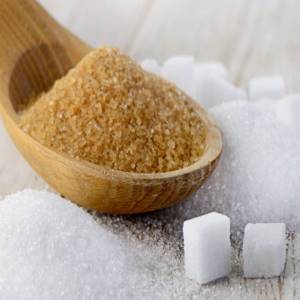
Sugar on wooden table. Selective focus
According to international requirements, certain proportions must be taken into account when producing white chocolate. The composition of the product must include:
- not less than 14% milk powder;
- from 20% cocoa butter;
- not less than 3.5% milk fat;
- no more than 55% sugar.
Only if this ratio is observed can you be confident in the quality and safety of the product. In addition to standard chocolate bars, confectioners began to actively use this dessert for decorating cakes and pastries, replacing even the beloved sugar icing with it.
The Aztecs served a miraculous drink with spices; chocolate with hot chili peppers was very common. Europeans drank the bitter drink as a medicine, and only after adding sugar they began to consider it a sweet dessert, which immediately captivated many. In the second half of the 19th century, solid chocolate appeared, which was done for the convenience of buyers. They constantly experimented with this delicacy and one day, when they decided not to put cocoa powder, but to add milk, they got white chocolate.
The main thing is to observe moderation
It is difficult to overestimate not only the taste of chocolate, but also its beneficial effect on the human body. Interestingly, at the dawn of the 19th century, pharmacists even sold it in the form of a hot drink as a good means of restoring strength. Some believe that it can be addictive due to the fact that it activates the production of “happiness hormones” - endorphins. But until today, scientists have not found evidence to support this controversial judgment. But they discovered a lot of beneficial properties of chocolate. Research in this direction has been carried out for many years, and literally in the last few years, scientists have made major discoveries regarding the influence of this dessert on people’s well-being.
For example, recently scientists from Italy, in the course of their observations, came to the conclusion that if you consume chocolate in moderation every day, this will reduce the risk of neurodegenerative diseases. They found that the black variety contains a special substance that stimulates working memory. It is responsible for the fact that a person can keep in his head the information that is necessary to solve complicated logical tasks.
But their colleagues from the American state of California went even further in their research and proved that dark chocolate can slow down the aging of the body. For testing, they “treated” laboratory mice to a special substance—the flavonoid epicatechin. The dark type of chocolates is rich in them. In the course of research, scientists found that in elderly mice who received this substance, the level of stress significantly decreased and inflammatory processes in nerve cells were relieved. This ultimately led to a general rejuvenation of mouse organisms.
Of course, these magical effects can manifest themselves in the human body if two conditions are met: you need to eat only the dark chocolate variety and no more than 40 grams per day. In this case, the effect of cleansing the pulmonary bronchi and dilating blood vessels is achieved. It also helps strengthen bones and normalize blood pressure. Moderate consumption of bitter fruit also helps prevent heart attack. Scientists note a reduction in the risk of this dangerous disease by 17%!
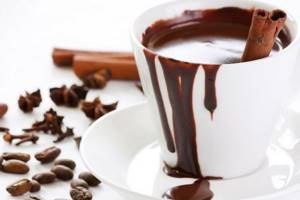
In addition, regular moderate consumption of this confectionery product is an inhibitory factor in the development of senile dementia. Its high content of antioxidants strengthens the immune system and slows down the overall aging of the body. And endorphins not only improve a person’s mood and level of performance, but even help cope with depression. Many people worry that eating this sweetness will harm their figures, but in fact, a small daily consumption of dark chocolate, on the contrary, helps normalize weight.
At the same time, like many other products, chocolate has a number of contraindications and negative consequences from its abuse. The fact is that cocoa butter, which is part of it, is one of the strongest allergens. Therefore, it is contraindicated for people who are allergic to this component. Otherwise, a jump in blood pressure and disruption of the cardiovascular system is possible.
People with the following diseases should absolutely not eat chocolate: diabetes, liver and stomach diseases, pancreas diseases, uric acid arthritis (popularly known as “gout”). Those who are at risk of developing kidney stones will also have to abstain from this sweetness.
Vitamins and nutrients
Chocolate contains the following complex of vitamins:
- a nicotinic acid;
- thiamine;
- riboflavin;
- tocopherol
The chemical composition of the chocolate product includes the most beneficial macro- and microelements for the body, such as:
- iron;
- calcium;
- phosphorus;
- magnesium;
- potassium;
- magnesium.
Dark chocolate is the healthiest. It consists of 60% cocoa mass (the rest is cocoa powder), cocoa butter and sugar. High-quality products should contain a high percentage of cocoa liquor. True bittersweet is rich in flavonoids. These substances prevent the formation of blood clots.
Useful components and their properties:
- tannins - prevention of plaque on teeth;
- fluoride - strengthens teeth;
- phosphorus - improves brain function;
- calcium - bone tissue formation;
- grated cocoa - production of endorphins.


